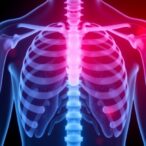
A groundbreaking innovation in the detection of airborne hazardous chemicals is set to transform both environmental and healthcare monitoring. Airborne contaminants, which can be incredibly dilute and elusive, pose significant challenges in accurate measurement and identification. The ability to reliably detect such minute concentrations is not only a technical challenge but also a crucial necessity for public health, particularly in preventing the spread of airborne pathogens and pollutants.
Enter the ABLE device, a compact and cost-efficient solution engineered by Assistant Professor Jingcheng Ma from the University of Notre Dame, in collaboration with researchers at the University of Chicago. ABLE, an acronym for Airborne Biomarker Localization Engine, is designed to revolutionize point-of-care detection by condensing airborne biomarkers into liquid form, thereby enhancing detectability and measurement accuracy. The work was recently published in the esteemed journal Nature Chemical Engineering, marking a significant milestone in the field of airborne chemical sensing.
Traditional techniques for airborne biomarker detection often rely on bulky, expensive instruments such as mass spectrometers to analyze gaseous samples. These machines, although highly sensitive, are impractical for widespread, real-time monitoring due to their considerable size, cost, and operational complexity. ABLE confronts these limitations by transforming the air sample into a condensed liquid phase. This key transformation opens up a plethora of possibilities for leveraging simpler, more affordable analytical tools like paper-based test strips, electrochemical sensors, enzyme assays, and optical detectors, which conventionally require a liquid sample.
.adsslot_FXcsgn6Gub{ width:728px !important; height:90px !important; }
@media (max-width:1199px) { .adsslot_FXcsgn6Gub{ width:468px !important; height:60px !important; } }
@media (max-width:767px) { .adsslot_FXcsgn6Gub{ width:320px !important; height:50px !important; } }
ADVERTISEMENT
The core operating principle of ABLE involves drawing ambient air into the device, where water vapor is introduced and the mixture is cooled to induce condensation. This process causes airborne biomarkers, even those at trace concentrations as low as parts per billion, to become highly concentrated within microscopic water droplets. These droplets coalesce on surfaces embedded with finely structured silicon spikes, creating highly localized liquid samples enriched with the target molecules. The enriched droplets then gravitate into a collection reservoir, rendering them accessible for subsequent biomarker analysis.
Jingcheng Ma’s expertise in thermal science and energy systems—particularly the transfer of water between liquid and steam phases—played a pivotal role in conceptualizing the condensation-based capture strategy. His insight was to view airborne biomarker detection through the lens of phase change physics, understanding that condensation could serve as a natural and efficient method for accumulating dilute aerosol components into a measurable liquid matrix. This concept diverges significantly from previous chemically intensive approaches, showcasing a minimalist but effective design philosophy.
The implications of ABLE’s technology are profound, especially in medical settings such as hospitals where non-invasive, rapid detection methods are desperately needed. Neonatal intensive care units, for instance, can benefit immensely from airborne biomarker testing because it may enable the identification of viral or bacterial threats without relying on invasive blood draws, which are risky and stressful for vulnerable infants. Detecting airborne nanoplastics and other emerging contaminants through this technology could also improve environmental health assessments around sensitive facilities and urban centers.
ABLE’s design prioritizes affordability and ease of fabrication; the device can be constructed for less than $200. This low cost does not sacrifice performance but rather reflects the innovative use of microstructured materials and an optimized condensation mechanism. The silicon microspikes serve a dual purpose: enhancing the surface area for droplet formation and facilitating the droplet migration process. By concentrating biomarkers effectively, these surfaces amplify detection signals, thereby enabling the use of inexpensive sensors that would otherwise be insufficiently sensitive.
The research team’s ongoing efforts focus on miniaturizing ABLE even further to incorporate it into mobile sensing platforms or robotic devices, expanding its utility beyond static environments to dynamic, real-world applications. Such portability could enable continuous monitoring across diverse locations, ranging from crowded public spaces to remote ecological habitats, hence providing real-time data streams on airborne hazards. Additionally, partnerships with clinical and community stakeholders are underway to pilot the device in neonatal care environments, which will generate valuable user feedback and validate its clinical efficacy.
A practically important aspect of the ABLE project is its adherence to what Ma calls “budget research.” By choosing to avoid complex and expensive chemical capture agents or high-end instrumentation, the team focuses on leveraging fundamental physical processes that are accessible, scalable, and adaptable. This approach holds promise for democratizing environmental and healthcare diagnostics by making advanced biomarker detection accessible to laboratories and clinics with limited resources.
In sum, ABLE represents a transformative leap in airborne biomarker localization and detection technology. Its innovative condensation-based mechanism effectively bridges the gap between gaseous airborne molecules and liquid-phase analysis, enabling both unprecedented sensitivity and practicality. The ease of use, scalability, and interdisciplinary engineering underpin its potential to become a ubiquitous tool in protecting human health and monitoring environmental quality worldwide.
As environmental concerns escalate and airborne pathogens continue to pose global risks, technologies like ABLE could be instrumental in early warning systems and widespread diagnostics. Innovations such as this exemplify how marrying insights from fluid mechanics, materials science, and bioengineering can yield solutions that are not only scientifically sophisticated but also pragmatically impactful. The future of airborne health diagnostics is set to be more accessible, efficient, and proactive thanks to ABLE.
Subject of Research: Airborne biomarker detection and localization for health and environmental monitoring
Article Title: Airborne biomarker localization engine for open-air point-of-care detection
News Publication Date: 21-May-2025
Web References:
https://www.nature.com/articles/s44286-025-00223-9
References: DOI: 10.1038/s44286-025-00223-9
Image Credits: (Wes Evard/University of Notre Dame)
Keywords
Airborne transmissible viruses, Medical diagnosis, Biomarkers, Molecules
Tags: advanced healthcare diagnosticsairborne biomarker localizationairborne chemical sensing technologyairborne disease detectioncompact detection instrumentsenvironmental health solutionsliquid phase biomarker detectionlow-cost air monitoring devicepoint-of-care detection innovationpublic health airborne pathogensreal-time monitoring of pollutantsUniversity of Notre Dame research


